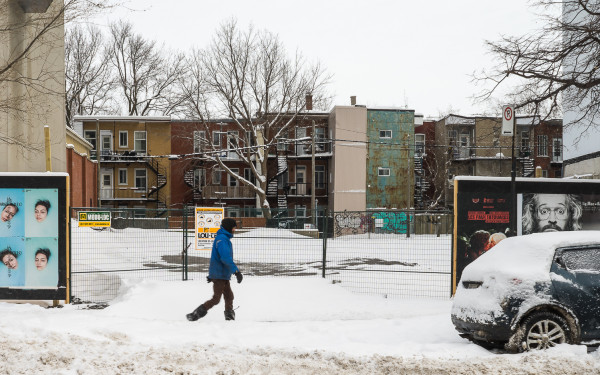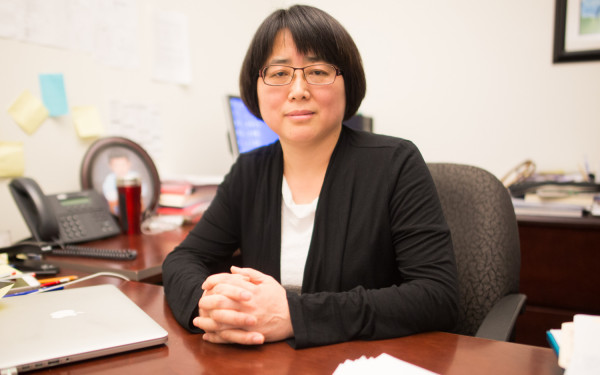Concordia’s New Science Centre to Break Ground in 2018 Despite Complaints
University Hopes to Get External Funding to Pay for Lab Equipment
Concordia University is set to break ground for the $52.75 million expansion of the Richard J. Renaud Science complex at the Loyola campus this spring. The new building is expected to house four stories of interdisciplinary research space.
The complex will be located on the green space behind the current Richard J. Renaud science complex, between Saint Ignatius Loyola Parish and the campus residence.
“There’s a great deal of excitement about it because there is such a growing number of graduate students interested in this field, so there is a growing demand for this space,”Concordia spokesperson Mary-Jo Barr said.
Concordia anticipates the new space will enable the university to partner with industry to produce cutting-edge research in biology, biotechnology, engineering, and chemistry fields. Barr explained that the costs for the project only apply to construction, and that the university will likely look outside to help fund the building’s labs.
“The university talks about being next generation, and I think this is completely in line with where it’s trying to go and who it’s trying to be, and how it’s trying to meet the demands that students and the workforce have for us, Barr said. “Definitely, there’s interest from the levels of government as well that we’re trying to produce the kind of employees that our future economy needs.”
The building is expected to be completed in 2019, taking up 15 per cent of the current green space. Up to four years after the project is completed, the remaining land will be filled with trees and picnic benches.
“The green space, the way it is now, is just a dead field that doesn’t inhabit many animals, and it doesn’t contribute or give back to the environment–it doesn’t clean the air, it doesn’t do much at all. But by improving it, we are improving the planet, adding life and helping clean the air,” she said.
According to Concordia’s website, the space is expected to draw an additional 230 students and faculty to the campus, and will require over 50 parking spaces to accommodate the increased foot traffic. However, the university believes there are currently more than enough spaces around the campus, and will not be building any additional spaces as part of the complex’s construction.
NDG Residents Unsatisfied
After the project was announced earlier this summer, nearby residents started a petition to have Concordia leave the land as is.
Notre-Dame-de-Grace resident Lisa Kagan has lived next to the field for the past 22 years, and has witnessed the space shrink over the years. Kagan works from home, and said she often sees residents and students taking advantage of the tranquil space outside the bustling city.
“I wish the green space was left alone and there for […] quality of student life,” Kagan stated.
She added that while she understands the value of increased education, students will only be passing through there temporarily, while the impact on the community is permanent.
“I think it’s going to lose some of the beauty of that calmness, which I think is so necessary and needed. I would love to see [the science complex] done somewhere else or downtown,” she continued.
“I think it’s going to lose some of the beauty of that calmness, which I think is so necessary and needed. I would love to see [the science complex] done somewhere else or downtown.” — Lisa Kagan
Barr contended the placement is strategic in allowing researchers, collaborators, and students to travel freely back and forth between the two science centres.
Kagan, who would have signed the petition if she had been able to, said she did not receive one of the university’s mailouts to affected residents explaining the project, and was not aware of the community engagement session held on campus until after the event.
“I walk my dog in the neighbourhood, so some of the dog walkers had mentioned it to me that there was going to be a building built there, so I heard about it on the street,” she explained.
Kagan is concerned the building will shadow the future park space, and worries the ventilation units will be noisy. She also says adding such a large building to the space should be avoided, since it will significantly reduce the amount of green space currently there.
The university’s website says the location and size of the building will not cast shadows into neighbour’s yards.
Barr explained that the university outlined their plan to develop the space in their strategic master plan as far back as 2001. At that time, Concordia anticipated the land would be used for an additional student residence.
According to the website, the university approached the Côte des Neiges-Notre-Dame-de-Grace borough council to change the plans from a residence to the science centre last year. Council unanimously approved the decision to make the change at their July 7 meeting.
For more information on the project, go to http://www.concordia.ca/maps/buildings/science-hub.

_900_660_90.jpg)
_600_832_s.png)

_600_375_90_s_c1.jpg)


